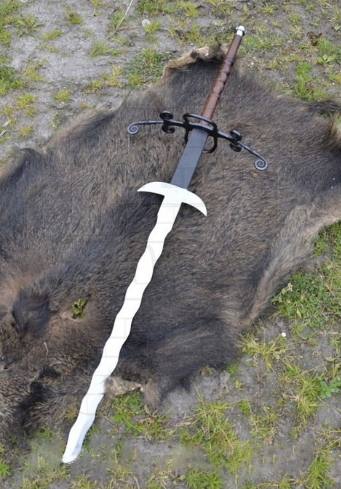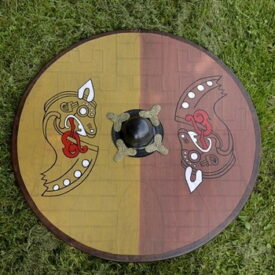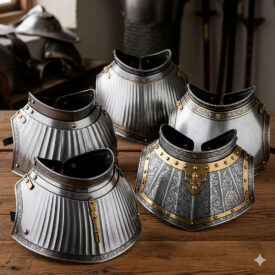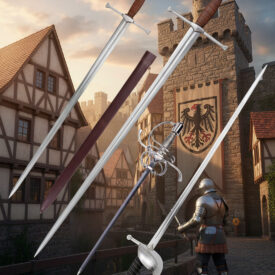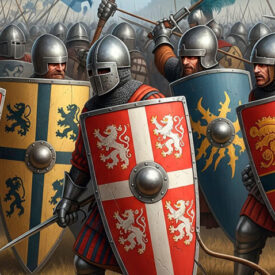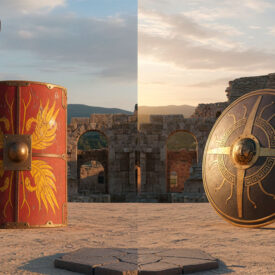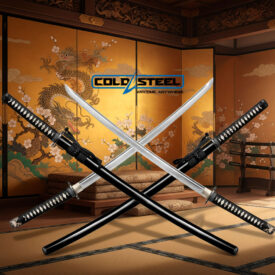Montante, espadon or mandoble? Three words that evoke images of battles, formation and steel. At first glance they seem synonymous, but their history, use and tactical nuances reveal clear differences that are worth knowing if you are passionate about historical fencing or re-enactment.
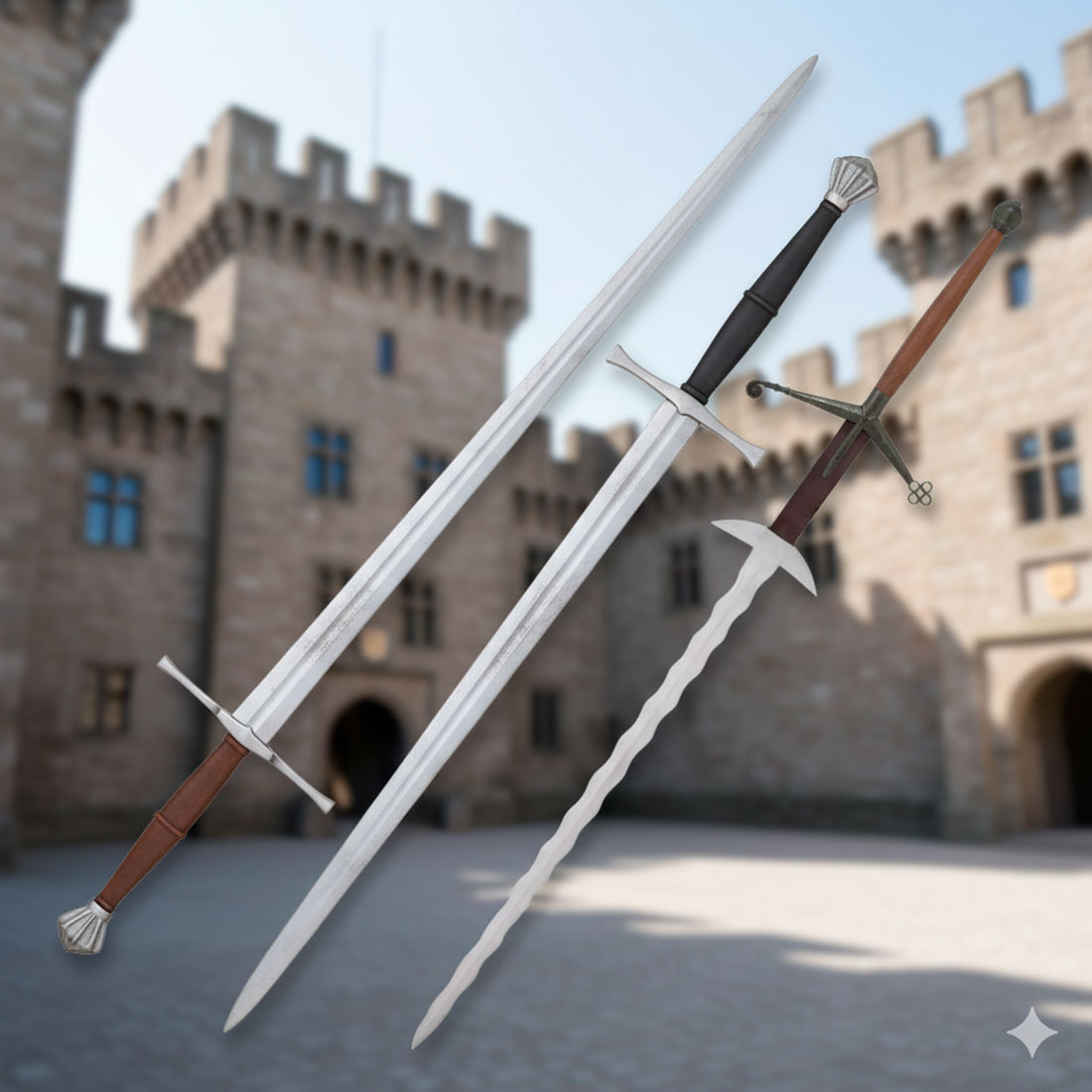
What distinguishes each name and why does it matter?
In this article you will learn to identify the etymological and functional differences between montante, espadon and mandoble. You will see how each term evolved, what physical and handling characteristics separate them, and in what military and social contexts they were relevant.
We begin with an image to place ourselves in the Renaissance era, when these great swords reached their maximum expression.
Etymological evolution of the great Iberian swords: montante, mandoble and espadon
Chronology is key to understanding why one term is more precise than another in Castilian Spanish. Below is a visual synthesis of their evolution.
| Era | Event |
|---|---|
| 14th Century | |
| Appearance of the term “montante” | The term montante appears in written texts from the 14th century onwards. |
| Late 15th Century | |
| Context of use | The montante constitutes the Iberian variant of the longsword in vogue from the late 15th century. |
| 16th Century | |
| General use of the montante | The term montante begins to be in general use throughout the 16th century. |
| Origin and initial meaning of “mandoble” | The word mandoble appears in the 16th century, but originally refers to a type of attack (a two-handed backhand blow) applicable to any bladed weapon, not the sword itself. |
| 17th Century | |
| Literary references | Miguel de Cervantes (1614) cites the montante to describe longswords used with both hands. |
| Origin of “espadón” | The term espadon arises in the 17th century as an augmentative of espada (sword); in that century its use with different meanings is also documented. |
| 19th Century | |
| Mandoble as a sword name | It is not easy to find references to mandoble as a synonym for sword until 1860; the term becomes generalized as a sword name in the 19th century. |
| Espadón as a colloquial denomination | The augmentative espadon consolidates as a colloquial and hyperbolic form for montantes and is in general use in the 19th century. |
| 20th Century | |
| Lexicographical recognition of “mandoble” | Only from the 20th century does the dictionary recognize mandoble as a word that, “colloquially,” can refer to a large sword. |
| Observations | |
| Frequency in the corpus | In the Spanish corpus, montante appears with greater frequency than mandoble or espadon, being the historically more precise term. |
Montante: the great Iberian sword
The montante is the traditional and precise term in Castilian Spanish to refer to the great two-handed sword used in the Iberian Peninsula during the Renaissance. It is not just an object: it is a fighting system.
Main characteristics:
- Length: blade around 1.5 m, with variants up to 1.85 m.
- Weight: relatively light for its size: 1–2 kg, which allows surprising agility.
- Grip and pommel: long handle for two hands and large pommel that counterbalances the blade.
- Handguard: straight quillons that evolve curving towards the blade.
Tactically, the montante was designed to deny the area around the wielder. Its techniques favored wide, chained blows and maneuvers to escape from entanglements, useful both in single combat and for confrontations against multiple adversaries or in confined spaces.
Espadon: descriptive and popular word
Espadon is, in essence, an augmentative: a colloquial way to describe a very large sword. In Spain it is often used as a synonym for montante, but it lacks the etymological precision of the latter.
Functionally it shares many characteristics with the montante but is usually used in texts and in speech to emphasize size and presence rather than school or technique. For this reason, in rigorous works it is preferred to speak of montante when describing the Renaissance Iberian sword.
Mandoble: weapon or blow?
Mandoble is the most ambiguous of the three words. Etymologically it is related to a type of powerful two-handed blow rather than a specific weapon. Only in late phases did its use extend to name large swords.
When mandoble is referred to as a sword, the definition is usually imprecise: published lengths and weights vary greatly and, in many cases, it refers to anachronistic or popular uses. In serious texts, mandoble is usually reserved for referring to the powerful blow and montante for the weapon.
Practical comparison
For a quick overview, this table summarizes the most relevant differences in design and use.
| Type | Blade length (approx.) | Typical weight | Era | Tactical use |
|---|---|---|---|---|
| Montante | 1.2–1.85 m | 1–2 kg | Renaissance (15th–16th C.) | Space control, wide cuts, combat against multiple enemies. |
| Espadon | >1.5 m | Similar to montante | Generalized use (17th C. onwards) | General description of large swords; breaking formations. |
| Mandoble | 1.4–2.1 m (variable) | 1.5–4 kg (according to sources) | References from 16th C.; popular modern use | Blunt blows, concussion damage; less precise term. |
- Montante
-
- Blade length: 1.2–1.85 m
- Weight: 1–2 kg
- Use: Foot combat, breaking ranks, defense in confined spaces.
- Mandoble
-
- Blade length: 1.4–2.1 m (highly variable)
- Weight: can reach 4 kg in heavy examples
- Use: Impact blows, especially against armor.
Tactical context and design evolution
The appearance of more resistant armors and compact formations conditioned the morphology of these swords. They went from broad blades intended for cutting to more robust and pointed designs capable of thrusting and transmitting impact.
Models, replicas and use in re-enactment
For those who practice HEMA or participate in re-enactments, distinguishing a montante from a generic replica is important: it is about adopting the appropriate balance and length for the style you wish to practice.
Below we show a random selection of related products so you can compare models and proportions.
In museums and replica catalogs you will find variations: some models adopt a heavy pommel and long handle to improve balance; others emphasize the narrow blade for thrusting.
Clarifying doubts about montantes and mandobles
What is the main difference between a montante and a mandoble?
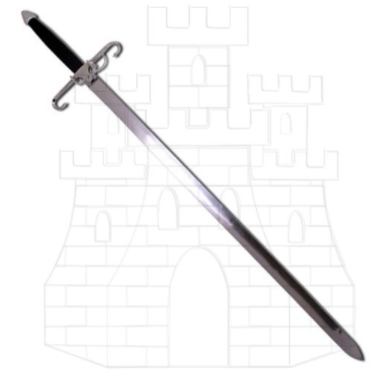 The main difference between a montante and a mandoble lies mainly in their size, weight, and era of use. The montante is usually a double-edged longsword wielded with two hands, relatively smaller in size, with a blade of about 1 to 1.4 meters, and was the oldest term used in Spain for this type of weapon. The mandoble, on the other hand, is an even larger and heavier sword, between 1.4 and 2.1 meters and up to 4 kg, designed to deliver powerful blows against armor, and its use was more characteristic in the 15th and 16th centuries.
The main difference between a montante and a mandoble lies mainly in their size, weight, and era of use. The montante is usually a double-edged longsword wielded with two hands, relatively smaller in size, with a blade of about 1 to 1.4 meters, and was the oldest term used in Spain for this type of weapon. The mandoble, on the other hand, is an even larger and heavier sword, between 1.4 and 2.1 meters and up to 4 kg, designed to deliver powerful blows against armor, and its use was more characteristic in the 15th and 16th centuries.
Furthermore, the term mandoble was adopted later and has specific tactical nuances, as it was intended to damage without piercing the armor, causing fractures or contusions, whereas montante is a more generic term for large two-handed swords, used from earlier times. Therefore, it can be said that the mandoble is a specific type of montante, heavier and longer, with a particular tactical focus.
What type of combat was most effective with an espadon?
Most effective combat with an espadon, or longsword, typically involves techniques that leverage its length and strength to keep the opponent at a distance. Key techniques include:
- Descending and ascending cuts: These vertical strikes can be devastating, especially when executed from an elevated position. Descending cuts are especially effective for striking the enemy’s head or shoulders, while ascending cuts can expose the opponent’s guard.
- Horizontal cuts: These side-to-side strikes generate force and speed, making them ideal for attacking the opponent’s torso or arms.
- Thrusts: Although not the technique most associated with the espadon, thrusts can be useful for attacking armored or shielded opponents, taking advantage of the sword’s tip to penetrate weak points.
- Defensive maneuvers: Using the longsword to deflect attacks and keep the opponent at a distance is crucial. This includes blocking and redirection maneuvers to create counterattack opportunities.
- Mobility and distance control: The length of the espadon allows control of the space between combatants, which is essential to maintain a tactical advantage and avoid close-range attacks from the opponent.
How did the evolution of armor influence the design of mandobles?
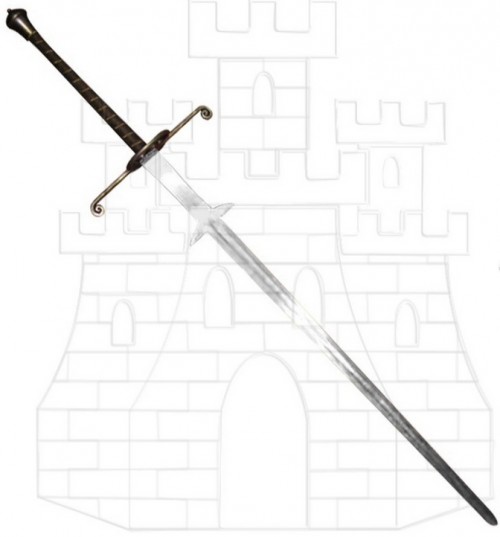 The evolution of armor influenced the design of mandobles primarily by shifting the weapon’s focus from piercing to producing impact damage. Since plate armor and chainmail offered effective protection against cuts and thrusts, mandobles were designed to generate powerful forces capable of producing concussions, fractures, or dislocations in the armor, incapacitating the opponent without needing to pierce it. This led to the development of large mandobles, with wide and heavy blades, elongated grips for two-handed handling that increased the force of blows, and reinforced guards to better protect the hands during combat. Additionally, the quality of steel and forging techniques were improved to support these dimensions and weights, providing stability and resilience to the blade.
The evolution of armor influenced the design of mandobles primarily by shifting the weapon’s focus from piercing to producing impact damage. Since plate armor and chainmail offered effective protection against cuts and thrusts, mandobles were designed to generate powerful forces capable of producing concussions, fractures, or dislocations in the armor, incapacitating the opponent without needing to pierce it. This led to the development of large mandobles, with wide and heavy blades, elongated grips for two-handed handling that increased the force of blows, and reinforced guards to better protect the hands during combat. Additionally, the quality of steel and forging techniques were improved to support these dimensions and weights, providing stability and resilience to the blade.
In summary, the evolution towards more resistant armors conditioned mandobles to be designed to maximize and transmit blunt blows, with greater length and grip, instead of focusing only on cutting or piercing capability.
What characteristics make a montante more agile than a mandoble?
A montante is more agile than a mandoble mainly due to having a balance closer to the hilt, which allows for faster and more controlled handling despite its size. Additionally, montantes usually have blades that vary in design (wide for cutting or narrow for thrusting) and a wide handguard that facilitates fluid maneuvers and chained blows without interruption. In contrast, some older or heavier mandobles can be more unbalanced and less agile due to their greater weight or more robust design.
In summary, the characteristics that make the montante more agile are:
- Balance close to the hilt, facilitating speed.
- Elongated two-handed grip, providing better control.
- Adaptable blade design (wide or narrow) for fluid and chained blows.
- Wide guards that allow efficient defensive and offensive maneuvers.
While the mandoble, being a type of large sword similar or sometimes synonymous with the montante, may include heavier versions, with less centered balance and designs less geared towards agility.
Are there variants of mangobles that were used in horseback combat?
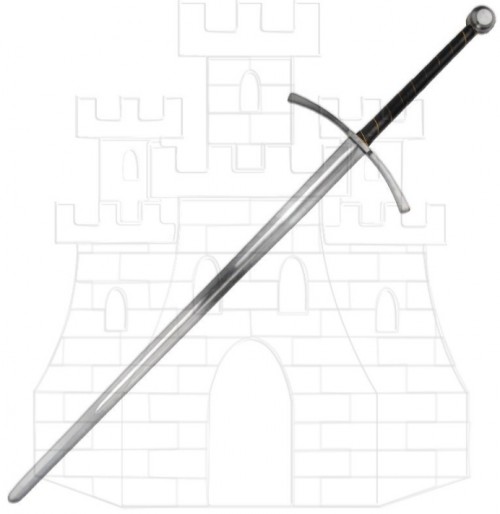 There is no solid evidence that there were variants of mandobles specifically designed for combat on horseback. The mandoble, also known as a greatsword or two-handed sword, was a large and heavy weapon, intended to be used almost exclusively with both hands, which made it impractical for a rider, who needed one hand free to control the mount. Its main function was to break armored infantry ranks and participate in foot combat formations, where its long reach and cutting power were advantageous.
There is no solid evidence that there were variants of mandobles specifically designed for combat on horseback. The mandoble, also known as a greatsword or two-handed sword, was a large and heavy weapon, intended to be used almost exclusively with both hands, which made it impractical for a rider, who needed one hand free to control the mount. Its main function was to break armored infantry ranks and participate in foot combat formations, where its long reach and cutting power were advantageous.
Swords designed for cavalry were generally one-handed and had shorter blades, allowing the rider to handle the reins with one hand and the weapon with the other. Although it was theoretically possible for an experienced warrior to use a mandoble from horseback in an emergency, this was not common or effective, and there are no known variants of mandoble specifically adapted for cavalry in the medieval or Renaissance era.
Choosing according to purpose and technique
If you are looking for a weapon for agile practice and space control techniques, the montante is historically the reference. If what interests you is aesthetics or an impactful object for a collection, espadon describes that character well. Avoid using mandoble as a technical term in historical studies without specifying its meaning.
The history of these words reminds us that vocabulary conditions interpretation. Choosing the correct word helps to understand the technique and anchor the replica in a concrete tradition.
VIEW LOWLANDER SWORDS | VIEW SCOTTISH SWORDS
Weapons like the montante are more than tools of war; they are fragments of culture, technique, and language. Understanding their differences will allow you to speak with precision and better appreciate their place in military history.
If you are curious about practicing with a replica, remember to choose the length and balance that respect the historical school that interests you. The correct word will open the door to techniques and traditions that deserve to be preserved.
